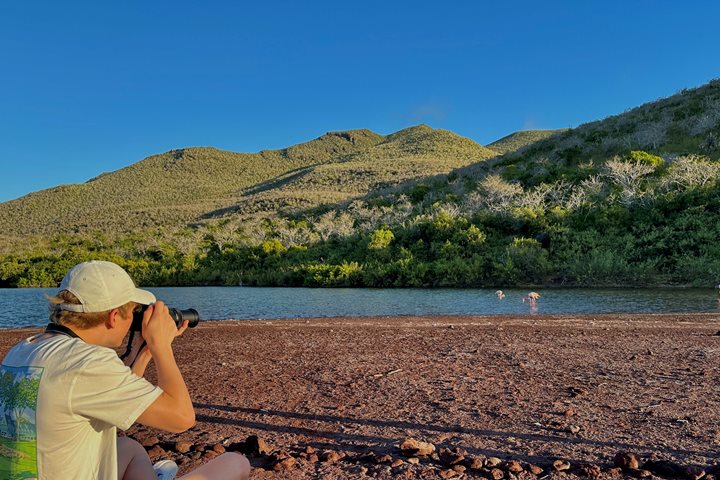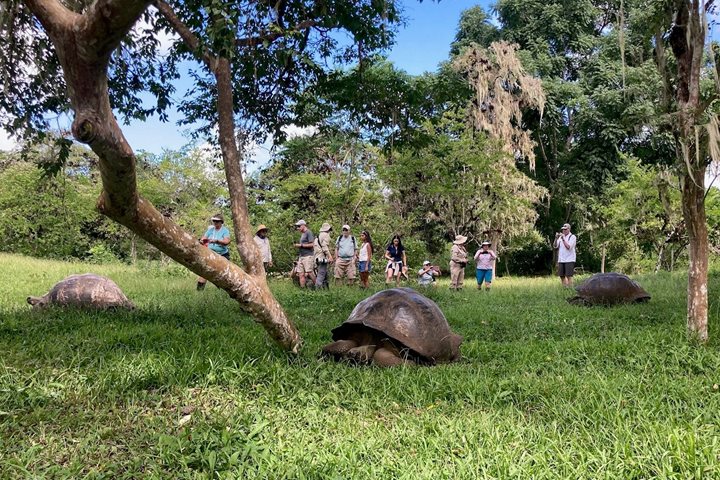We left behind Santa Cruz Island and early in the morning we arrived at Floreana. This beautiful island has had several names. The first of them, Charles Island, was in honor of Charles II, King of England. In 1892, the Ecuadorian government changed the English name to a Spanish one, Santa Maria. But it was the name Floreana, in honor of Ecuador’s first president, Juan Jose Flores, that stuck.
With the first rays of sun, we boarded Zodiacs heading for the calm waters of Post Office Bay to kayak in shallow water among the mangroves. As the clouds lifted, we could better appreciate the geology of the place. Old lava flows were now covered with green vegetation. On the trees, we spotted pelicans, frigatebirds, and lava herons. In the water, we spotted sea turtles, rays, sea lions, and many colorful fish.
After kayaking, we headed to Post Office Bay, which takes its name from the old mailing system used by buccaneers and early European visitors to the archipelago. Hundreds of years ago, letters were dropped into a wooden barrel with that hope that someone would carry them to their destination back home. We did the same by dropping off postcards.
Around noon, National Geographic Islander II repositioned off Champion Islet. The temperature of the ocean was over 78 °F, perfect for snorkeling. We spotted some sea turtles, white-tipped reef sharks, king angel fish, salemas, creole fish, and many colorful fish. Guests were also delighted by curious sea lions who came to play.
In the afternoon, we had some relaxing beach time at Punta Cormorant in north Floreana. We disembarked on a beach that appeared greenish, due to the high concentration of olivine, a glassy mineral abundant in the area. Walking inland, we reached a lagoon behind the beach and saw many flamingos whose pink color contrasted with the green of the water. We then reached the second beach, whose color was completely white. Its composition, unlike the first, was completely organic.
We saw stingrays in the waters, as well as many sea turtles waiting for darkness so they could come ashore and lay their eggs at the highest part of the beach. Pelicans and blue-footed boobies took part in a feeding frenzy as they dove for fish. A reminder that it was time for our dinner, too, and we returned to the ship accompanied by a spectacular sunset.







